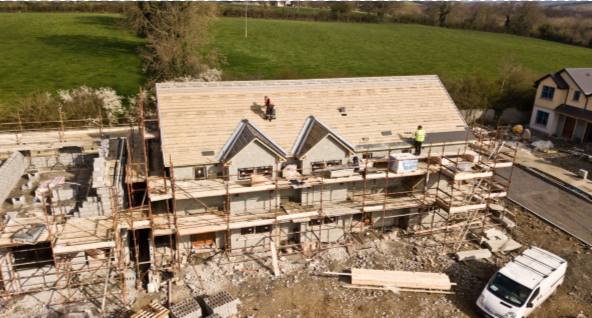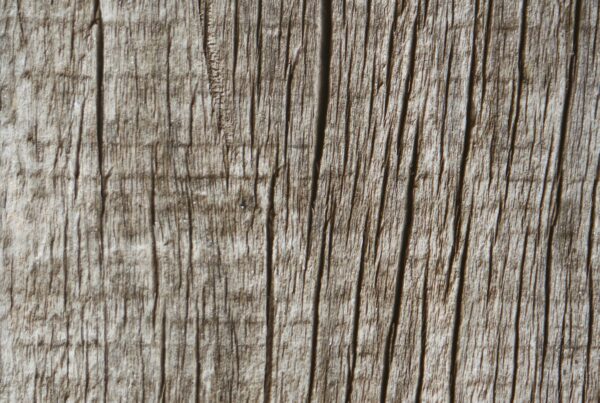Lumber defects can give a unique character to a piece of wood, but for structural integrity, the defects should be kept to a minimum. Most of the following are caused by problems with cutting, stacking, or drying the wood—with the exception of naturally-occurring knots.
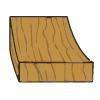 Bow: A bow is a curve on the face of a board, typically extending from one end to the other. If the board was sitting flat, the ends would not be touching the ground.
Bow: A bow is a curve on the face of a board, typically extending from one end to the other. If the board was sitting flat, the ends would not be touching the ground.
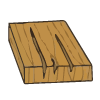 Check: A check is a crack that occurs along the wood’s growth rings. It does not extend through the entire thickness of the board. You may notice that the corners of a board do not touch the ground when the board is flat on a surface.
Check: A check is a crack that occurs along the wood’s growth rings. It does not extend through the entire thickness of the board. You may notice that the corners of a board do not touch the ground when the board is flat on a surface.
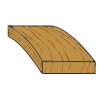 Crook: A crook is a warp that happens along the edge of a board.
Crook: A crook is a warp that happens along the edge of a board.
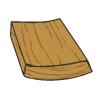 Cup: A cup is when the face of a board is hollow.
Cup: A cup is when the face of a board is hollow.
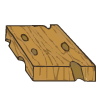 Knot: A knot is a naturally-occurring defect in a piece of wood. Knots are circular imperfections caused by a broken-off tree branch. Tight knots are nothing to worry about, but dead or loose knots may fall out or leave a hole.
Knot: A knot is a naturally-occurring defect in a piece of wood. Knots are circular imperfections caused by a broken-off tree branch. Tight knots are nothing to worry about, but dead or loose knots may fall out or leave a hole.
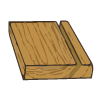 Shake: A shake is when the grain between the wood’s growth rings separates. Shakes can occur on the face of a board or below the surface.
Shake: A shake is when the grain between the wood’s growth rings separates. Shakes can occur on the face of a board or below the surface.
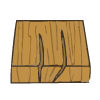 Split: A split is a crack in a piece of wood that goes all the way through the board.
Split: A split is a crack in a piece of wood that goes all the way through the board.
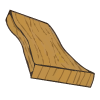 Twist: A twist occurs when there are multiple different bends in a board.
Twist: A twist occurs when there are multiple different bends in a board.
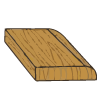 Wane: A wane is when there is missing wood or an untrimmed edge along the side or corner of a board.
Wane: A wane is when there is missing wood or an untrimmed edge along the side or corner of a board.

